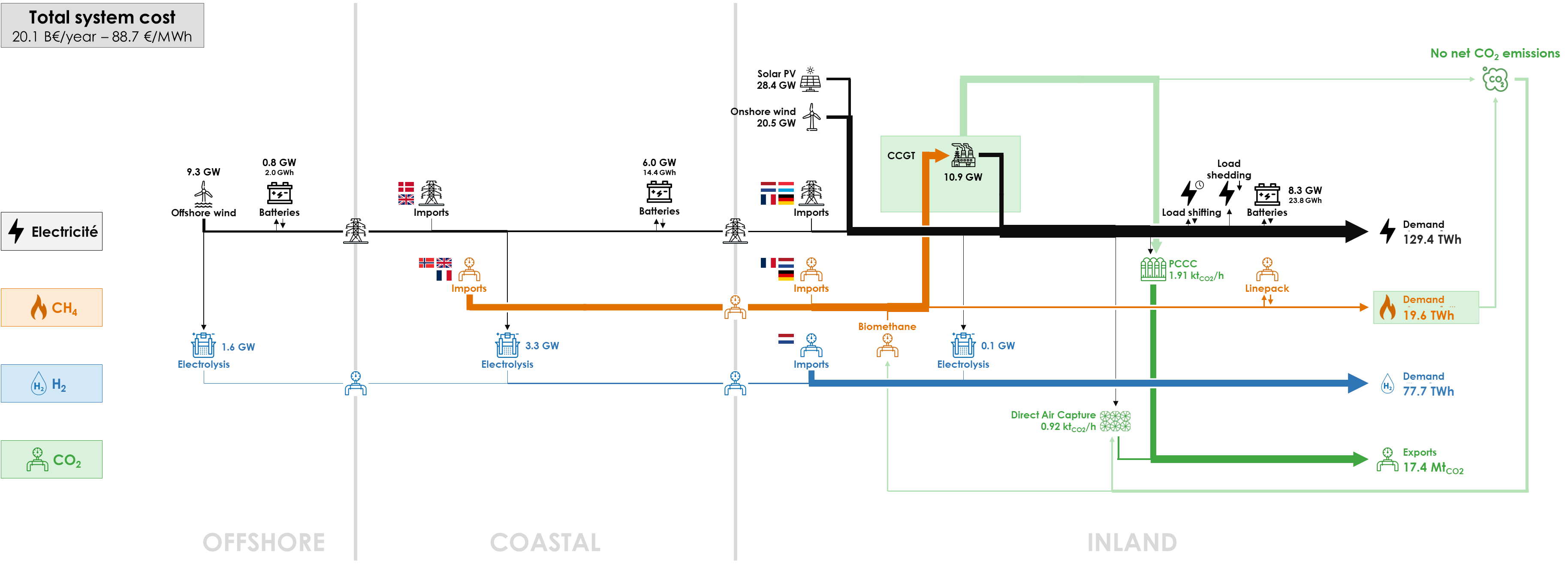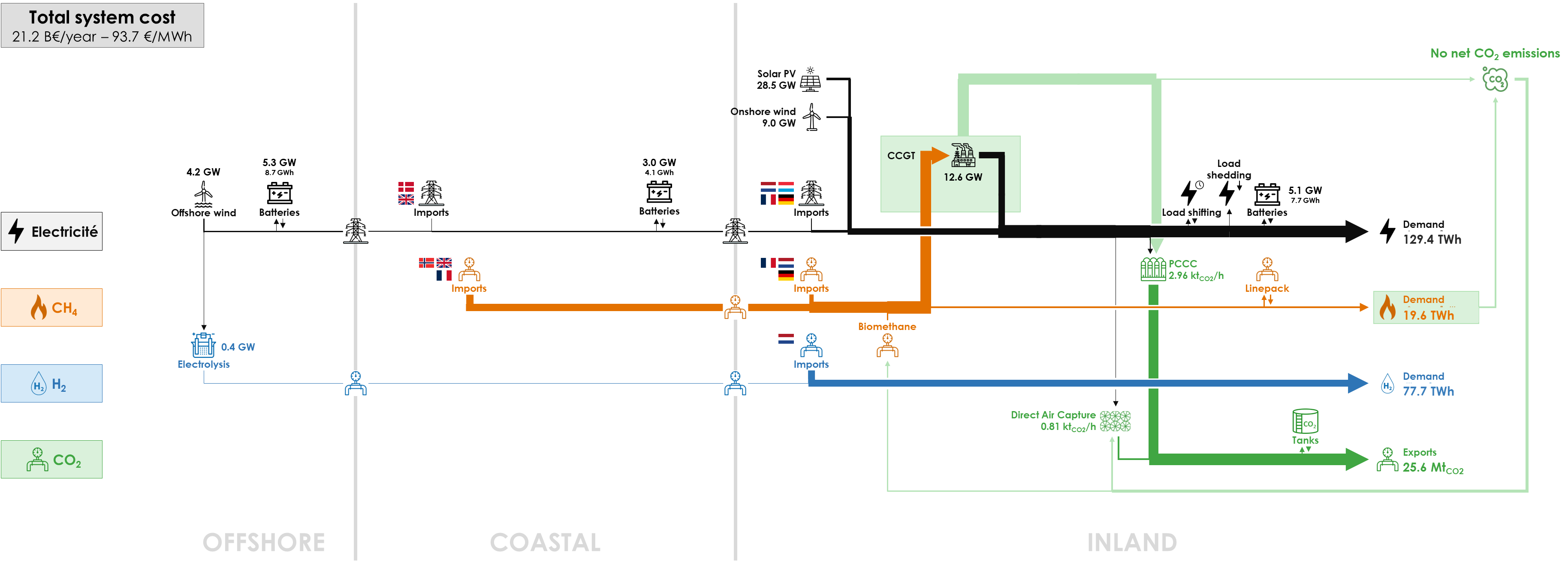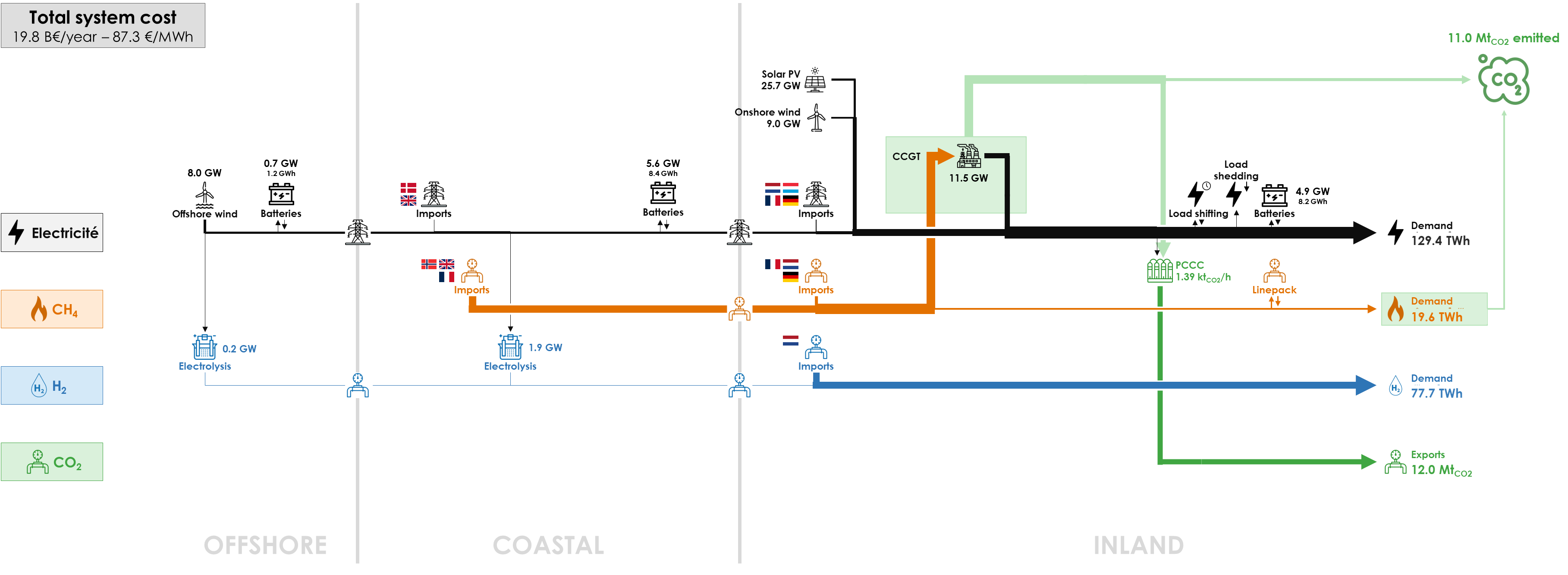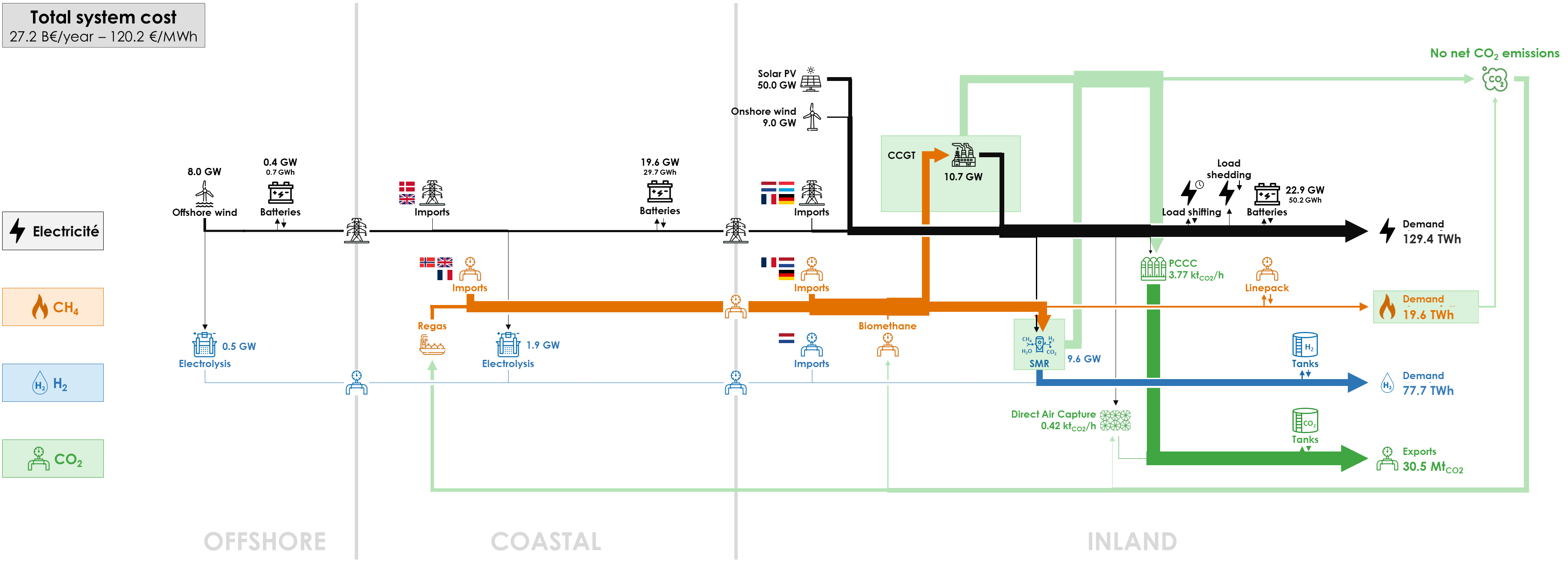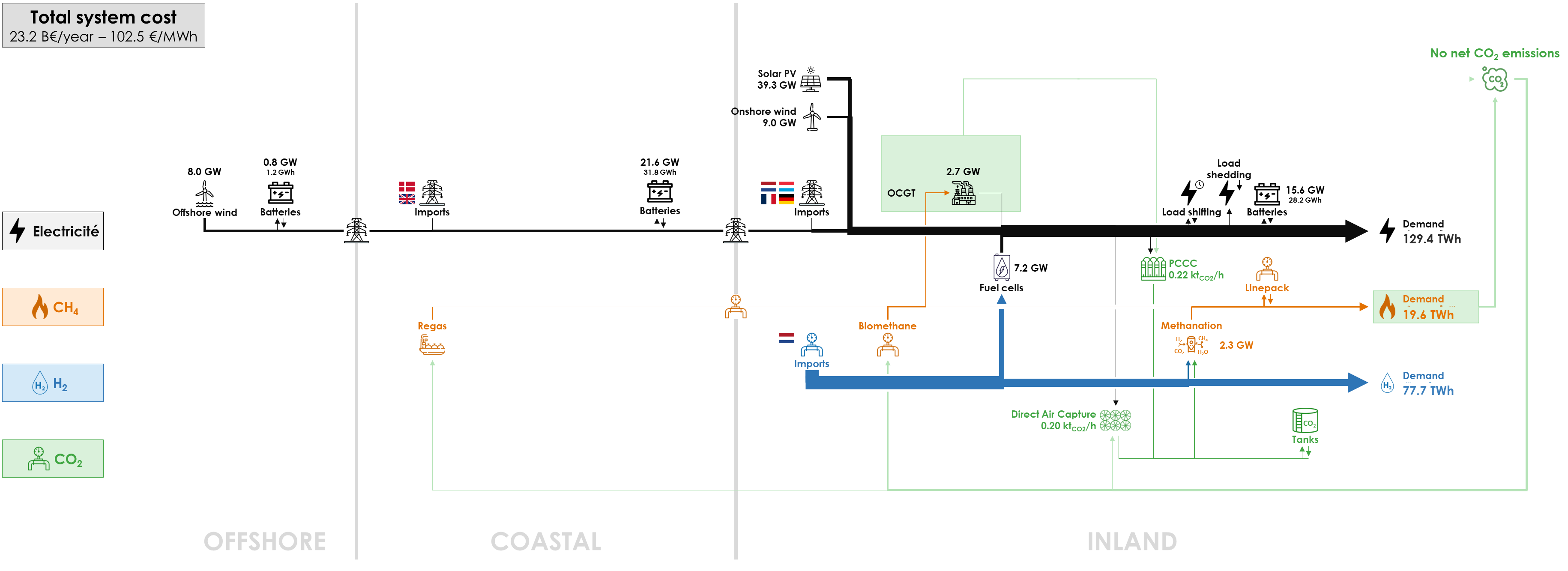Before diving further you should have a look at the Base Case.
Sensitivities are carried out by changing some parameters of the Base Case and analysing how the optimal energy system is modified. In order to analyse the impact of a single parameter, simulations are carried out with several values of that parameter to detect when changes take place, e.g. production and conversion capacity, load factor of conversion facilities, import flows… Here is an overview of the different scenarios considered together with a short overview.
